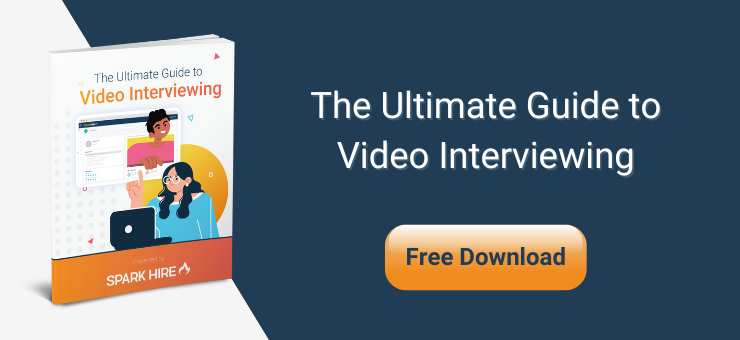As a company leader, you’re challenged to make quick decisions to prevent panic and protect the physical and emotional well-being of your employees during a crisis. We stepped into this last decade with a National State of Emergency in the United States and a worldwide pandemic. As a result, you probably shifted your work approach in a communal effort to slow the spread of COVID-19 which lead your company to an unexpected change in work models.
While you likely have a crisis management plan in place to keep the general workflow on track, most plans don’t include actionable steps to keep hiring goals and projected growth on target.
Fortunately, in today’s digital age, you have options to transition your team to a virtual hiring process and even manage your workforce remotely. One dominant element of a virtual hiring process is how you convert your interviews. The best way to do so is with a transition to virtual interviews.
Here’s how you can effectively pivot your hiring team to virtual interviews and be prepared for any hiring climate:
Outline & communicate role transitions
Determine how certain aspects of the hiring process will change as your team switches to interviewing virtually. Update the structure of interviews, interview questions, evaluation criteria, and evaluation responsibilities to streamline more efficient virtual interviews.
For example, your hiring team is likely used to improvising on situational questions or asking follow-up questions in person. For the sake of a fair and efficient virtual interview experience, create a set of structured interview questions for candidates to respond to via video interview.
Furthermore, if you don’t already have a consistent candidate evaluation rating system, this is a great opportunity to implement one. Be sure to discuss in your transition to virtual interviews how the protocol for collaborating on decisions will change.
Once you’ve established clarity on evaluation and decision-making processes, designate specific team members who will contact candidates currently in the hiring process. Set up templates employees can use on what information to communicate to candidates, such as how the company plans on moving forward with hiring, onboarding, and even working from a virtual setting, depending on the duration of the crisis management period.
Implement and train on tools that align with your needs
A smooth transition into virtual interviews requires tools to ease your team’s frustrations with a learning curve and enhance their productivity. You must identify how their needs will change throughout each stage of the hiring process from an in-person to a virtual setting.
Scheduling, for example, will shift as your team becomes more independent. Consider an easy-to-use tool that integrates with current calendars. Candidates can schedule interviews in real time based on each hiring pro’s calendar availability. This becomes one less thing your team needs to organize and track on their own.
It’s also critical to consider the impacts of a quick transition on collaboration and communication processes. A virtual hiring process heightens the necessity for your hiring team to work seamlessly to keep moving forward. Choose a virtual interview platform that enables your employees to effectively source and interview candidates from anywhere, while providing a channel for team collaboration.
Here at Spark Hire, for example, both one-way video and live video interviews offer sharing capabilities. Everyone on your team can review interviews when and where it’s most convenient for them. They can immediately share feedback, rate interviews, and even send automated rejection emails to candidates. Simplifying communication at every step of the process helps your hiring team feel more connected and confident.
Keep your hiring team engaged and supported
Abruptly switching to a virtual interview process may require your team to learn through trial and error during the transition phase. But, that doesn’t have to be intimidating. The important thing is to keep your hiring team engaged and supported as they find their footing.
Create a space for employees to remain connected. Encourage them to ask questions, share tips, and voice concerns regarding the transition process. Set aside time as you make the transition to discuss all of the ‘what if’ scenarios your hiring team may encounter. For example, “What if there is a tech issue?” or “What if a candidate needs to reschedule a live interview?”
Consider the benefits of a virtual interview platform that offers a live virtual interview concierge. With this service, both your hiring team and candidates are supported through interview setup before the interview and technical or user issues are worked out in real time.
You can also have your hiring team practice using the virtual interview tools by running through the interview process to test the effectiveness of questions and technology together. Before you ask candidates to complete virtual interviews, make sure your team:
- Understands their role in the virtual interview process
- Knows who their points of contact at the video interviewing platform are
- Has access to all communication channels
- Adapts their questions and evaluation to attain the insights your decision-makers need
- Participates in a training session with your virtual interview platform
- Understands the candidate experience
Be sure you and other leaders are actively involved in these conversations and solutions. Employees look to you during times of crisis for confidence that the hiring process can successfully move forward, and that their efforts will continue to impact the greater good and success of the company.












